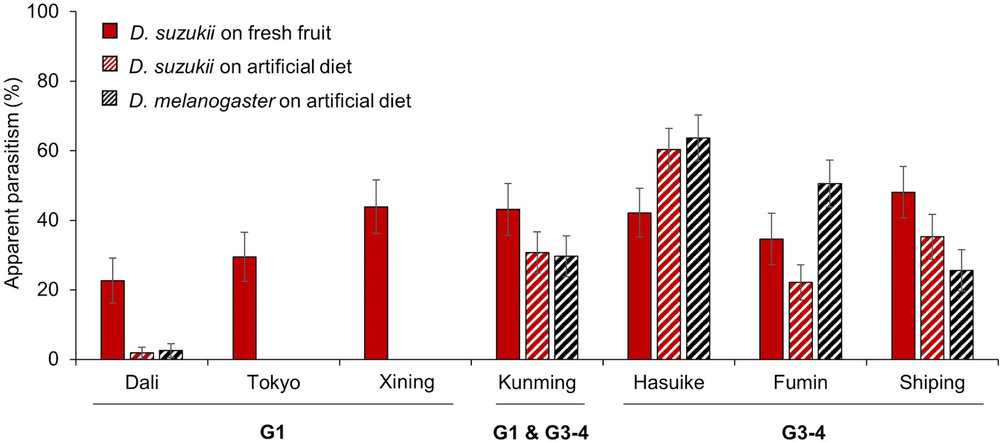holistic management of emerging forest pests and diseases
New research provides evidence for a cryptic parasitoid species
A research article recently published in the Scientific Reports journal investigates the taxonomic status of the parasitoid wasp Ganaspis brasiliensis. The paper called "Evidence for a cryptic parasitoid species reveals its suitability as a biological control agent" presents evidence that G. brasiliensis, which is considered as one of the a candidate for biological control of the invasive spotted wing drosophila Drosophila suzukii, is a complex of at least two cryptic species.

Variation in apparent parasitism by Ganaspis cf. brasiliensis from different origins in Asia parasitizing two host species feeding on two nutritive media. Source: Seehausen, M.L., Ris, N., Driss, L. et al. Evidence for a cryptic parasitoid species reveals its suitability as a biological control agent. Sci Rep 10, 19096 (2020). https://doi.org/10.1038/s41598-020-76180-5
The authors of the article, among which HOMED researchers, use DNA barcoding and crossing experiments to determine the existence of cryptic species within G. brasiliensis. Based on the estimated results, the authors study the specificity in behavior of different samples of G. brasiliensis towards D. suzukii using no-choice and choice tests. Results estimate difference in behavior of the separate G. brasiliensis samples.
The provided evidence for a cryptic G. brasiliensis species in the study thus demonstrates the need for a combination of biosystematics with biological and ecological investigations for the development of safe and efficient biological control programs.
Read the article here.